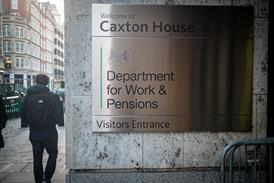The recent signing of the Mansion House Accord by 17 major UK pension schemes has put pensions and investment returns firmly under the spotlight, writes People’s Partnership chief executive officer Patrick Heath-Lay.

One of the major questions that will be on the minds of people saving for their retirement – and is certainly what the seven million UK workers who save into our pension scheme want to know – is: Will private markets really lift my pension returns?
Let’s look at the numbers.
Are private markets worth it?
Some observers have pointed to the fact that analysis by the Government Actuary’s Department (GAD) showed only ‘slightly improved’ outcomes to members from investing in private markets.
The GAD analysis, first published back in July 2023 alongside the Mansion House Compact, assumed fees of at least 1% a year plus 10% of performance. It also looked at private equity alone.
This illustrates exactly why we declined to sign the initial compact. When costs bite that hard, most of the value ends up with asset managers, not savers.
Why the new accord is different
The Mansion House Accord is broader and bolder than what came before: a 10% allocation across the full private market spectrum – infrastructure, renewables, property, growth credit, as well as private equity.
These assets often come with lower costs and fees, and more investor-friendly terms that leave more of the benefits in the hands of savers.
What the GAD analysis does drive home is two vital things:
- The returns you expect from these assets are critical to determining whether they contribute positively to members’ pensions.
- Costs matter a lot. In many cases, private market investing leaves too much benefit in the hands of managers and not savers. This must be avoided.
What one extra percentage point can do
To help understand the power of long-term returns, let’s look back before we look forward.
Over the past 10 years to the end of May 2025, our default fund almost doubled every pound invested – a total return of 92.6%. An investment of £10,000 in 2015, after all charges and cost,s would be worth over £19,000 today. It’s something we’re proud of.
When this is broken down, the average annual returns were roughly 7% a year, which might look less spectacular, but our example shows that modest-sounding returns, left to compound at low fees over long periods, can do wonders.
Doubling each decade is a solid starting point to help people build financial foundations for life, something our organisation is committed to. However, nudging up that return even slightly changes everything.
Let’s take an example, expanding the saving horizon to a working life with regular contributions.p>
Case study
Our subject will be a 22-year-old median earner on £32,000 today, saving the minimum rate of 8% of salary for 40 years.
(This assumes the lower qualifying earnings limit of £6,500 with the assumption that this increases in line with inflation.)
At 7% net returns, they would retire with £319,000, which is adjusted for inflation.
To be clear: not many defined contribution pots today come close to this value, but the current contribution rates have only been in place since 2017, and this is an illustration of what a full career of contributing at these rates could end up generating.
But what if we could do better?
At 8% net returns, the same person would retire with £392,000 – an extra £73,000. That is the tangible value of a single percentage point. It’s not just a number, it’s a step change in retirement living standards – it’s retiring four years earlier.
Where the uplift might come from
Private markets will not do all the heavy lifting here, but they can provide a meaningful share.

Infrastructure projects such as solar farms, for example, have offered yields of around 8% plus growth with low fees.
UK property shows similar promise right now, with the potential to deploy at scale and make the most of some currently attractive opportunities.
Combine half a dozen such incremental gains – better portfolio construction, smarter rebalancing, tighter currency management, and selective co-investment alongside managers – and the aggregate effect becomes transformative.
Capabilities, not headlines
To keep those gains in members’ hands, we need the capability to invest directly, negotiate terms, and co-invest when opportunities arise.
Scale alone is not enough. Governance and skill matter just as much.
We commissioned a paper that covered this extensively earlier this year, which concluded that building the right capability could leave billions of pounds more in savers’ pensions.
The key thing to watch here in the early days of the Mansion House Accord is how pension schemes build the capability to invest in the most efficient ways, rather than just be measured on the headline percentage figure of the funds deployed.
It’s crucial that this doesn’t become a box-ticking exercise. Schemes should be judged on whether they have incrementally increased returns for savers as a result of investing in this way.
The power of marginal gains
Capture even a handful of extra basis points each year, keep costs low, and give investments time. Your pension will thank you.
Private markets are no silver bullet but accessed in the right way, they are an important tool for building the financial foundations that members deserve.
Patrick Heath-Lay is chief executive officer of People’s Partnership, provider of the People’s Pension.






















